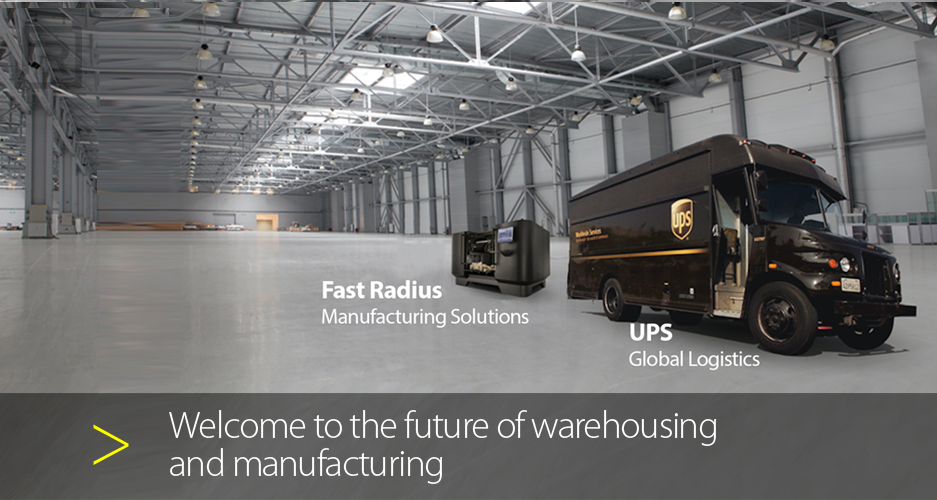US package delivery company UPS is teaming up with enterprise software company SAP to branch out into a spare parts 3D printing business.
A new additive manufacturing system that combines UPS’s logistics expertise with SAP’s Leonardo technology platform is being launched.
UPS isn’t exactly new to 3D printing; they already have 3D printers installed across many of their stores. But until now, the printing was all happening on a much smaller scale. Plus, the focus was on prototypes and models.
Now the company has gone from simply storing spare parts for clients worldwide to making them on demand.
Given recent cost reductions and innovations in 3D printing, UPS jumped at the chance to branch out into the sector. They’ll focus on spare parts manufacturing for mission-critical machines such as servers and MRI machines.
According to UPS, these spare parts are usually stored across UPS facilities worldwide. When a part fails, it’s shipped within 24 hours to ensure swift replacement.
Now with 3D printing, they can print the parts on demand. This will significantly reduce the need for storage facilities and space.
Alan Amling, UPS vice president of corporate strategy, says that the real value of 3D printing is that it actually changes the whole supply and demand relationship.
“The reason why parts warehouses are full is because you have to produce in advance of the demand, but in 3D printing, demand can actually lead supply,” he says.
“We have about $1.8 trillion worth of inventory in the United States, so that’s a lot of money and a lot of capital tied up,” Aimling adds.

SAP provides expertise to speed up 3D printing technology integration
The SAP Leonardo software provides three key processes for the UPS networks.
First, it approves and digitizes the parts. Next, it calculates the financial viability of parts versus traditional engineering processes. Finally, it routes the orders from production to final delivery.
“SAP will likely play a role as we continue to expand because one of the key areas that has to be considered is that, for our current customers, everything involved with additive manufacturing technology needs to be integrated with their current production system or manufacturing system, which typically runs on SAP,” says Aimling.
With this in mind, UPS invested in 3D printing company Fast Radius to develop an on-demand 3D printing facility. The first facility for additive manufacturing has been built in Louisville, Kentucky.
Unfortunately, one of the core issues with printing spare 3D parts is the quality of the finished product.
Obviously, if you’re going to replace a part in an MRI machine, it has to be perfect. That’s why they also created a 3D printing testing facility in Chicago together with Fast Radius to monitor quality issues and consistency.
It seems they’re off to a good start. For many companies, quality 3D printed replacement parts on demand will certainly be a welcomed change.
Source: searchsap.techtarget.com

License: The text of "UPS Partners With SAP to Launch Spare Parts 3D Printing Business" by All3DP is licensed under a Creative Commons Attribution 4.0 International License.